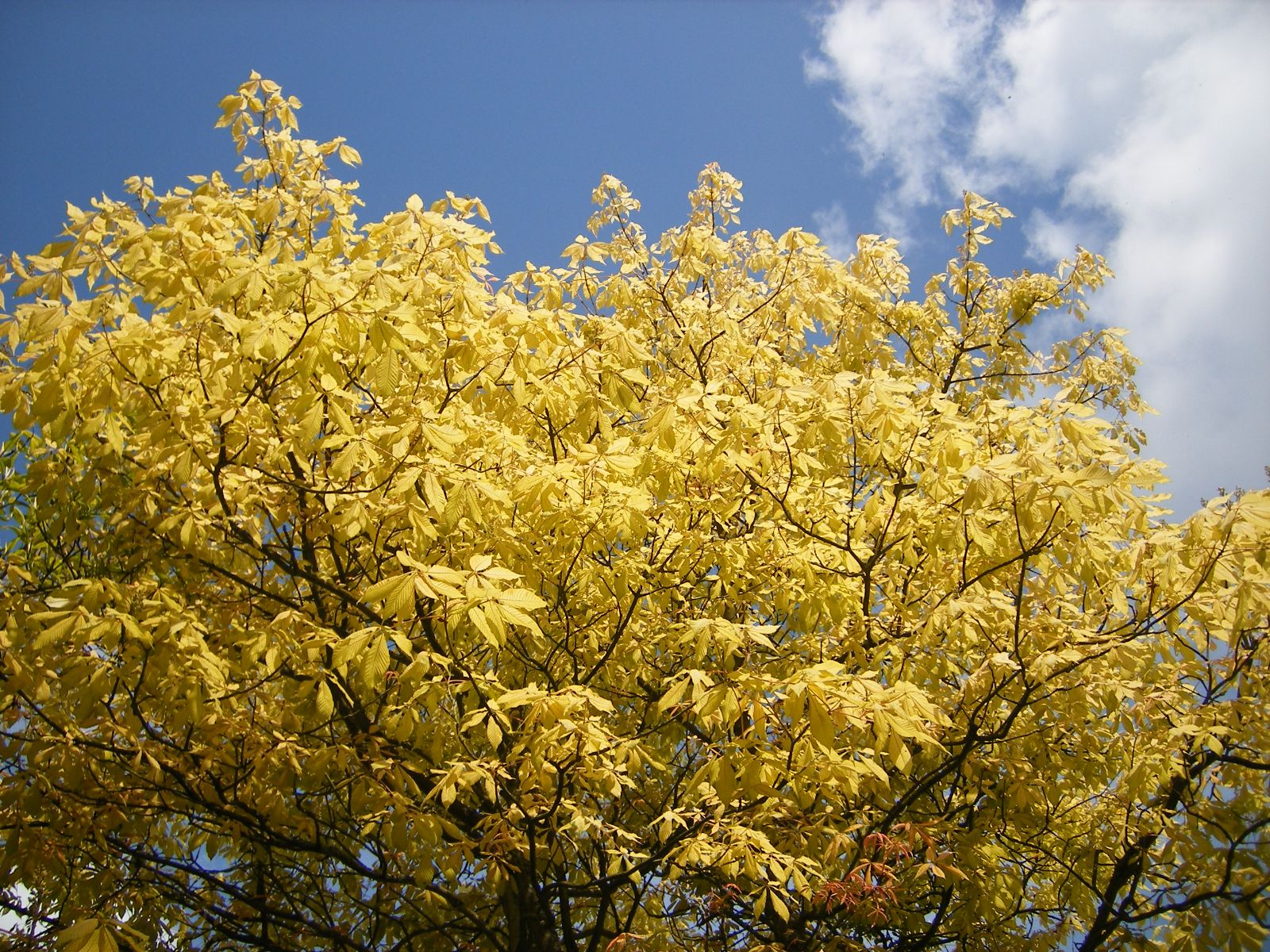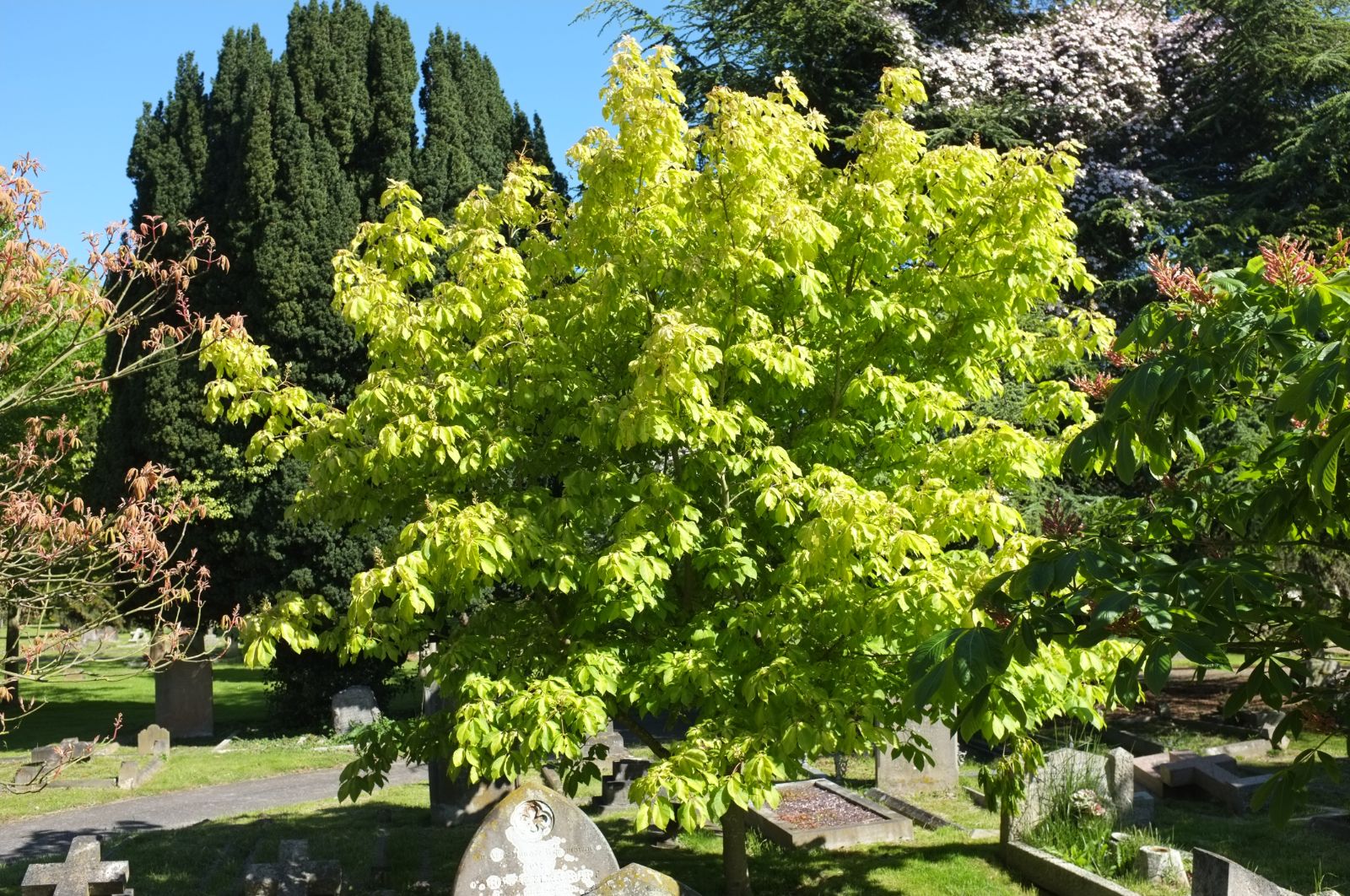Aesculus × neglecta
Credits
Article from Bean's Trees and Shrubs Hardy in the British Isles
Recommended citation
'Aesculus × neglecta' from the website Trees and Shrubs Online (treesandshrubsonline.
Genus
Infraspecifics
Other taxa in genus
- Aesculus × bushii
- Aesculus californica
- Aesculus × carnea
- Aesculus chinensis
- Aesculus + dallimorei
- Aesculus flava
- Aesculus glabra
- Aesculus glabrescens
- Aesculus glaucescens
- Aesculus hippocastanum
- Aesculus indica
- Aesculus × marylandica
- Aesculus × mutabilis
- Aesculus octandra
- Aesculus parviflora
- Aesculus pavia
- Aesculus splendens
- Aesculus sylvatica
- Aesculus turbinata
The tree from which Lindley described this species in 1826 was imported from France as “A. ohioensis”, an old name for A. glabra. Similar trees were in cultivation in Europe at that time and came to be known by Lindley’s name. The origin of the seed from which the plant was raised is uncertain. But A. neglecta is very near in its botanical characters to a buckeye that grows wild in the south-eastern part of the United States, described by Sargent as A. georgiana. He found an even better match for it in some trees growing on the Du Pont estates near Delaware, said to have been raised from seed collected in the wild. These he accepted as typical A. neglecta and placed A. georgiana under it as a variety – var. georgiana (Sarg.) Sarg. A. neglecta is nearest to A. flava, but is of smaller stature and is distinguished by its downy (but not glandular) calyx and flower-stalks. In Lindley’s type the flowers were yellow streaked with red. In the var. georgiana they are yellow or red.
The theory has been put forward that A. neglecta is a hybrid of A. flava but, if so, it is difficult to see what the other parent could be. A. sylvatica Bartram, the second parent suggested by Hardin in Rhodora, Vol. 59, pp. 185–203, is scarcely more than a bare name.
From the Supplement (Vol. V)
From an examination of the type-specimen of Lindley’s A. neglecta, the American authority J. W. Hardin concluded that it represents a hybrid, one parent being A. flava (octandra) and the other a species whose correct name has been the subject of dispute, but which is held by Hardin and other botanists to be A. sylvatica Bartr. Thus Lindley’s name should be given as A. × neglecta. As it happens, the clone ‘Erythroblastos’ mentioned on page 261 is also a hybrid and of the same parentage, and is therefore not subject to any change of taxonomic position (P. F. Yeo, Baileya, Vol. 8, pp. 59–61 (1960); J. W. Hardin, Rhodora, Vol. 62, pp. 127–9 (1960)).
cv. ‘Erythroblastos’. – Some examples of this cultivar are: Westonbirt, Glos., in Home Nursery, pl. 1935, 30 × 23⁄4 ft (1982); University Botanic Garden, Cambridge, 26 × 23⁄4 ft at 1 ft (1984); Birr Castle, Co. Offaly, Eire, 33 × 2 ft (1985).
A. sylvatica Bartr. A. neglecta auct., not Lindl. – A large shrub or small tree not much over 30 ft high. Leaflets elliptic, tapered at both ends, to about 6 in. long and 11⁄2 in. wide, soon glabrous, finely toothed. Inflorescence up to 7 in. long. Calyx and pedicels downy, without glands. Petals creamy white, pink, or sometimes yellowish, usually with purple markings at the base. Fruits without prickles, 1 to 11⁄2 in. wide. A native of the south-eastern USA as far north as southern Virginia.
The name A. sylvatica was published by William Bartram in his famous Travels through North Carolina (1791). The new botanical names that occur here and there in this work were for long either ignored, or rejected as ambiguous or otherwise invalid. However, so far as A. sylvatica is concerned, many botanists now accept the name, even though Bartram tells us no more about his species than the colour of the flowers and the fact that it was a tree.
A. georgiana Sarg. is given as a synonym of A. sylvatica by Hardin, and indeed it agrees with it in essential botanical characters. But its flowers are red, which is not the case in typical A. sylvatica, and as Hardin suggests, it may be that the introgression of genes from A. pavia is responsible for the flower-colour. So, for horticultural purposes, it seems preferable to use the name A. georgiana for plants agreeing with A. sylvatica in key characters but having red flowers. The characters in question are: lateral petals edged with eglandular hairs and their surface eglandular except near the margin, calyx campanulate or tubular campanulate (glandular on surface and margins in A. pavia, which usually has a tubular calyx); pedicels and base of calyx downy or tomentose, eglandular (glandular in A. flava, which of course also differs in making a large tree). In A. × mutabilis (see this supplement) the lateral petals are edged with glandular hairs as in A. pavia, while in A. × neglecta the pedicels and base of calyx are glandular as in A. flava.
'Erythroblastos'
Unfolding leaves a vivid shrimp-pink; of German origin, first distributed by Späth’s nurseries, reaching cultivation in this country a few years before 1935. ‘The leaves start to unfold about the end of April, and are the most beautiful creamy pink colour, with bright carmine petioles. The plant is quite hardy but as late frosts will cut the young foliage it should be planted where the morning sun cannot get at it’. (R. C. H. Jenkinson in The New Flora and Sylva, Vol. 8, p. 59.) It was given an Award of Merit in 1962.



